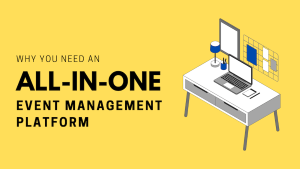
Why do some events draw researchers while others do not? The reason links to the quality of content offered at each event. Researchers often look for valuable content that supports their work. They want to attend sessions that help them learn new techniques, stay up to date on the latest information, or solve problems directly. Also, they tend to work under tight schedules. The pressure to meet deadlines, review manuscripts, conduct lab work, and instruct students requires them to decide how to allocate their limited time. Because of this, they avoid content that feels unclear or invaluable.
When an event presents high-quality content, researchers stay engaged. In many cases, they also depend on events to learn skills that help them handle new research needs. They ask questions, share feedback, and connect with others in similar fields.
Events that deliver high-quality content also build long-term trust. This blog explains 13 types of content that attract researchers to events.
What Researchers Look For in Event Content
The main reason researchers take part in events is to find solutions to specific problems. Most join only when the benefits of attending are obvious.
They first determine how clearly an event is written about. They browse the event page to see if the theme fits their work, then make a quick decision on whether to attend. A clear purpose and theme are very important to keep them on track. Many look for posters, presentations, or published papers. These options help them gain visibility among their peers. They also look for ways to share their work. As a result, content that explains rules and deadlines simply attracts more submissions.
In addition to sharing their work, researchers also seek educational experiences. They aim to gain new ideas and new tools, and they often look for events that support their field of study.
High-Value Content for Researcher Engagement
1. Workshops
Researchers enjoy workshops because they get hands-on experience and follow a sequence of specific steps to complete a single task. The speaker gives a series of small actions, and the group follows each step in order.
Additionally, researchers appreciate that workshops typically focus on tools, datasets, or simple processes that support their day-to-day research. The pace of a workshop is set to allow for slow, careful learning, yet it remains quick enough to hold participants’ attention. This balance helps researchers to stay focused while developing new skills they can use right after the event.
2. Plenary Sessions
Plenary sessions involve the entire audience. In plenary sessions, the discussion is at a general level, focusing on the top-level issues that concern all participants. A strong plenary session explains trends clearly and simply. The presentation is casual; therefore, the language is informal, and the message is easy to follow.
Researchers have a general understanding of the major concerns in their area of study. The session helps them see how each part of the event fits the main theme. The session follows a simple structure. One speaker. One topic. One clear message at a time.
3. Paper Presentations
Paper presentations offer researchers a brief overview of recent studies. Each speaker delivers one study within a short time period. After each talk, the audience learns about the study’s methodology, data, and results without additional details. Talks are kept relatively short so the audience can remain focused.
Many researchers prefer the paper presentation format when they want to hear several papers in one session. The focus stays on the findings, not long stories. Paper presenters describe the hypothesis tested, what worked, and what they learned from the study.
4. Innovative Research Content
Innovative research content brings new ideas to the front. These sessions highlight fresh work that pushes a field forward. Some projects are small, but they show smart steps. Others feel big and bold. All of them give people something real to think about.
Researchers use these sessions to share updates. They receive comments that help them improve their work. Some meet peers who study similar topics. Others find people who want to review or support the next stage. The sessions encourage clear exchange without pressure.
5. Demonstrations
Demonstrations illustrate in real-time how a system, tool, or methodology operates. Researchers observe each action as it occurs. The speaker presents each demonstration clearly and sequentially, allowing the audience to follow the process without confusion.
Researchers who learn best through observation prefer demonstrations. The researcher observes the entire workflow from beginning to end, not just a written description. The speaker demonstrates each action live, keeping the audience engaged. Demonstrations also reveal some details that may not be apparent from a written manual. The format supports fast learning because the visual flow is simple, direct, and easy to follow
6. Technical Panels
Technical panels consist of experts sharing their views on a single topic. Each participant presents brief points from their respective work, and the audience receives a variety of perspectives. Researchers receive a range of viewpoints on a single topic.
Technical panels are effective when a topic requires multiple viewpoints. The discussion flows from one panelist to the next, and researchers can follow the transition without difficulty. The format is structured so that each panelist addresses the same topic.
7. Roundtable Sessions
Roundtable sessions are informal gatherings where a small number of researchers discuss openly. Each roundtable focuses on a particular topic, and each participant is given sufficient time to contribute to the conversation. This format is more personalized than larger sessions. Additionally, roundtables support strong networking. People learn more about each other’s work. They exchange details about methods, data, or tools in a comfortable setting. This can lead to later collaboration or simple support.
8. Skill Labs
Skill labs teach researchers a single targeted skill in a direct, hands-on way. The speaker breaks the task into small steps, and each step is clear. Researchers practice each part until they feel in control. The session stays short and active.
Skill labs work well for methods that need repetition or careful technique. Researchers learn faster when they perform the task rather than just hear about it. This helps the idea settle in a simple, steady way.
9. Case Study Sessions
Case study sessions show how one project unfolded from start to finish. Researchers use a real example rather than a theory. The speaker explains the problem, the steps taken, and the outcome. Researchers see how each decision shapes the final result, giving them a realistic view of research work.
Case studies also help researchers avoid common mistakes. They can clearly see what worked and what failed. The format stays simple and guides without heavy language. Many researchers choose case studies when they want concrete examples that match situations they face in their own work.
10. Expert Clinics
Expert clinics provide researchers with direct guidance on a specific challenge. The speaker focuses on a narrow issue and explains how to handle it with simple steps. Researchers benefit from this targeted style because the session stays practical from the first minute.
Expert clinics work well for subjects that need strong detail. The expert breaks down the issue with clear points, and researchers follow the process without confusion. The format supports quick progress. A short clinic often gives researchers enough direction to fix an existing problem. It can also help them plan a new path for their project. The guidance is direct, simple, and easy to apply.
11. Lightning talks
Lightning talks are short sessions with one clear goal. Each researcher presents an idea within a tight time limit. To maintain a high-energy atmosphere, speakers move quickly through their presentations so that everyone has time to deliver within the allotted time frame. This allows the community to get information about a large number of research sectors. Researchers can quickly scan and identify research topics and studies directly related to their current projects.
Research communities use lightning talks to discuss preliminary results, new tool releases, and updates on ongoing projects that are not ready for full-length presentations. It provides a quick path to learning and delivers clear value to busy researchers.
12. Networking Sessions
Research networking sessions provide a structured time for researchers to meet potential collaborators. It creates an opportunity for participants to find others working on similar topics. During research networking sessions, researchers can ask quick questions about tools, techniques, or methodologies used in a particular study. These sessions are designed to be informal and accessible, allowing all participants to engage in conversation.
Key Takeaway
A strong event depends on content that supports researchers at every step. Clear ideas, simple layouts, and steady planning will help people learn with ease. When organizers follow these steps, they create spaces where researchers can share work, build new connections, and return for future events.
Dryfta supports this flow with tools that help you plan, track, and organize your content in one place. The platform keeps everything easy to manage, so that your team can focus on people rather than fixing small issues. A smooth event flow often leads to a stronger event experience for researchers.




